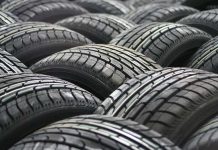##Industry Landscape##
### #Present Industry Metrics#
The European automotive parts sector currently generates over €350 billion annually, experiencing a compound annual decrease of 4% since 2019[2][9]. This contraction contrasts with 250+ branch networks maintained by major distributors like GSF Car Parts[1][7][15]. Workforce metrics indicate 2m industry professionals sustain operations across manufacturing and distribution channels[2][9]. https://carparteu.com/
### #Electrification Impact#
Accelerated adoption of hybrid vehicles drives double-digit increases in power electronics demand, offsetting declining legacy system components[2][5]. The EU’s zero-emission vehicle mandate threatens quarterly market shrinkage for traditional drivetrain suppliers[2][5].
##Compliance Ecosystem##
### #Type Approval Mandates#
EU Directive 2007/46/EC enforces system-level compliance through ECE certifications covering 150+ technical regulations[3][10][14]. KBA-approved testing facilities validate emission thresholds using R156 software update protocols[14][10].
### #Right-to-Repair Legislation#
The 2024 EU Design Regulation dismantles OEM repair monopolies for body panels, generating projected consumer cost reductions through independent workshop empowerment[5]. Transition periods vary: 8-year phaseouts across member states based on prior regulatory frameworks[5].
##Distribution Networks##
### #Key Market Players#
ALVADI dominate cross-border logistics with 500,000+ SKUs across 50 countries, leveraging 3PL partnerships for hourly workshop replenishment[4][8][11][13]. European Auto-Parts Exporters specialize in truck trailer parts, maintaining €200M inventories[12][13].
### #Compliance Mechanisms#
E-Mark certification ensure component interoperability through ISO/IEC 17025 testing of brake fluid formulations[6][14]. Euro Car Parts enforce VIN validation on aftermarket alternators[1][15].
##Technological Disruption##
### #E-Commerce Transformation#
Platforms like EUROPART EWOS utilize VIN decoders achieving 90% order accuracy, integrated with blockchain tracking[8][12][15]. FEBEST deploy 3D parts visualization across 100,000+ OE references[4][11].
### #3D Printing Adoption#
Aftermarket suppliers pilot on-demand spares production for vintage vehicle parts, reducing storage costs by nearly half through distributed manufacturing networks[9][13].
##Sector Pressures##
### #Profitability Stress#
Intensifying competition from Eastern European manufacturers forces 17% price reductions among French OEMs[9][10]. GSF counter with 190+ pickup points offering 30-minute fulfillment[1][15].
### #Workforce Gaps#
The automotive mechatronics transition creates critical technician shortages, prompting upskilling partnerships with manufacturing academies[12][15].
##Future Projections##
### #Circular Economy Models#
Upcycled components target 55% market penetration through carbon credit trading[5][9]. Motor core refurbishment centers emerge near logistics corridors[2][14].
### #Autonomous Vehicle Readiness#
LiDAR calibration kits require ASIL-D certification, driving €3.4B R&D investments across Barcelona tech clusters[10][14].
##Conclusion#
#The EU automotive parts sector navigates unprecedented transformation from right-to-repair policies. industry leaders will reconcile cost competitiveness with digital agility. As ICE phaseouts accelerate, strategic pivots toward software-defined vehicle architectures separate winners from obsolete operators[2][5][9][14].#
















